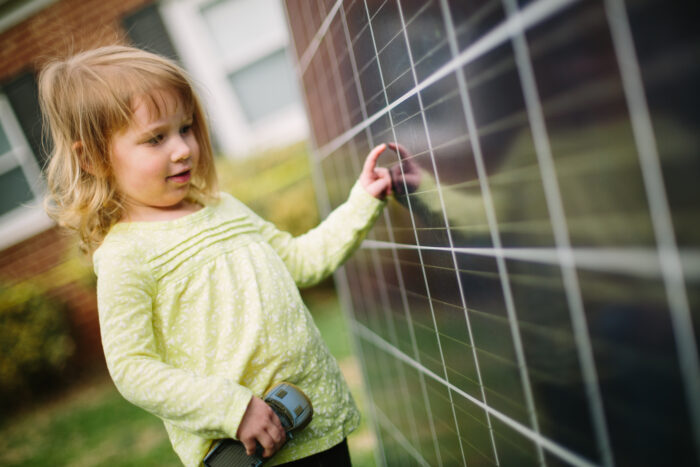Smart, sustainable solar in the South
As demand for utility-scale solar energy continues to grow across the South, there’s increasing attention on the development process and planning for solar installations, the policy and regulatory landscape, and the impact solar projects will have on the economy, environment, and local communities.
One of the most important decisions in a large-scale solar project begins at the onset: deciding how and where the solar installation will be. Solar siting is a critical part of project development and can make or break the installation of a utility-scale project.
Josephus Allmond, Staff Attorney
At a time when federal climate incentives are lifting significant barriers to solar development and demand for solar is at an all-time high, the report can serve as a resource for solar developers, impacted communities, and farmers interested in siting utility-scale solar projects with related land use, conservation, and community concerns in mind.
Our latest report, Solar Siting in the South, highlights the benefits of solar and explores the environmental review and permitting processes in place to evaluate and minimize potential adverse impacts associated with new utility-scale solar development.
Solar Siting in the South: Read the full report.
A growing and essential part of the South’s transition to clean energy
Today, utility-scale solar energy is the cheapest form of new electricity generation and continues to decline in price, especially compared to coal, gas, and nuclear. With over 22 gigawatts of solar energy already installed—enough to power over 2.6 million homes—and significantly more planned or in development, the South is already reaping the benefits of solar energy including local job creation and lower monthly energy bills.
Key provisions in the historic federal climate law, the Inflation Reduction Act, will further expand clean energy access, especially in communities where significant barriers to solar have impeded development. This includes tax credits for utility scale-solar and funding opportunities for rooftop and community solar programs. Since its passage one year ago, the IRA has already led to the announcement of 272 new clean energy projects nationwide, resulting in over 170,000 new jobs and generating over $278 billion in new investments for local communities.
Planning for a clean energy future must be done equitably and with earnest community input in project siting and development, providing opportunities for public comment and meaningfully addressing local questions and concerns.
Emma Wellbaum, Associate Attorney
While recent federal action is eager to move utility-scale solar forward, utility and state policies remain central to the widespread adoption of solar across the South.
Solar facilities above one megawatt in size make up a growing portion of the South’s changing energy landscape and will continue to be an essential part of its transition to clean energy.
Unfortunately, many local governments inadvertently or intentionally discourage solar development by imposing burdensome restrictions that limit landowners’ rights to make clean energy investments on their property. According to the National Renewable Energy Laboratory, such restrictive ordinances can decrease the availability of land for solar development by 38 percent nationwide. However, when done thoughtfully, local governments and municipalities can remove barriers, create incentives, and enact standards for responsible solar development that minimize impacts while benefiting communities.
Community involvement at the forefront

“Communities must be a key part of the solar siting process from the onset,” says Associate Attorney Emma Wellbaum. “Planning for a clean energy future must be done equitably and with earnest community input in project siting and development, providing opportunities for public comment and meaningfully addressing local questions and concerns.”
Incorporating community engagement into development plans can help to ensure that the public understands the proposed project and help to determine maximum benefits before and as proposals are rolled out. Failure to do so may result in further harm to Southern communities, many of which already bear disproportionately high energy burdens and pollution from fossil fuel emissions. Smart solar development is a matter of environmental justice, and it’s crucial that our region decarbonizes in a way that makes our energy system cleaner, equitable and more affordable.
Best practices for responsible solar siting
Like any development, there are associated impacts with solar facilities. Yet many review processes are already in place to evaluate and minimize these impacts, including the National Environmental Policy Act, the Endangered Species Act, and the Clean Water Act.
The guide also includes best practices for developers to identify areas where solar development will have the fewest land-use impacts, such as mapping proposed solar sites early to identify biological and cultural resources, agricultural lands, and regional land-use patterns.
Unlike most other forms of energy production, solar is easily deployable in the built environment—it can be sited on existing structures such as rooftops and parking garages, avoiding land impacts altogether. Up to one-fifth of the country’s total power needs could be sited on rooftops. Also, siting solar facilities within existing electrical utility rights-of-way or close to planned grid updates can help reduce the impacts associated with new transmission infrastructure.

Sustainable landscaping, another approach highlighted in the report, allows developers to not only preserve the land used for solar facilities but enhance it by co-siting solar energy with low-height plants, native vegetation, or other agriculture practices. By planting shrubs and groundcovers, such as native grasses and wildflowers, solar sites can benefit from improved erosion control, pesticide avoidance, stormwater infiltration, and provide additional wildlife habitat. Planting grasses and wildflowers in low-maintenance areas of solar facilities also reduces long-term maintenance costs and the associated emissions.
Utility-scale solar facilities provide clean, affordable, and sustainable energy to homes and businesses throughout the region. Developers, community members, and environmental agencies can collaborate to help ensure that solar remains one of the cleanest forms of energy by following best practices, carefully planning, and providing opportunities for meaningful review.
